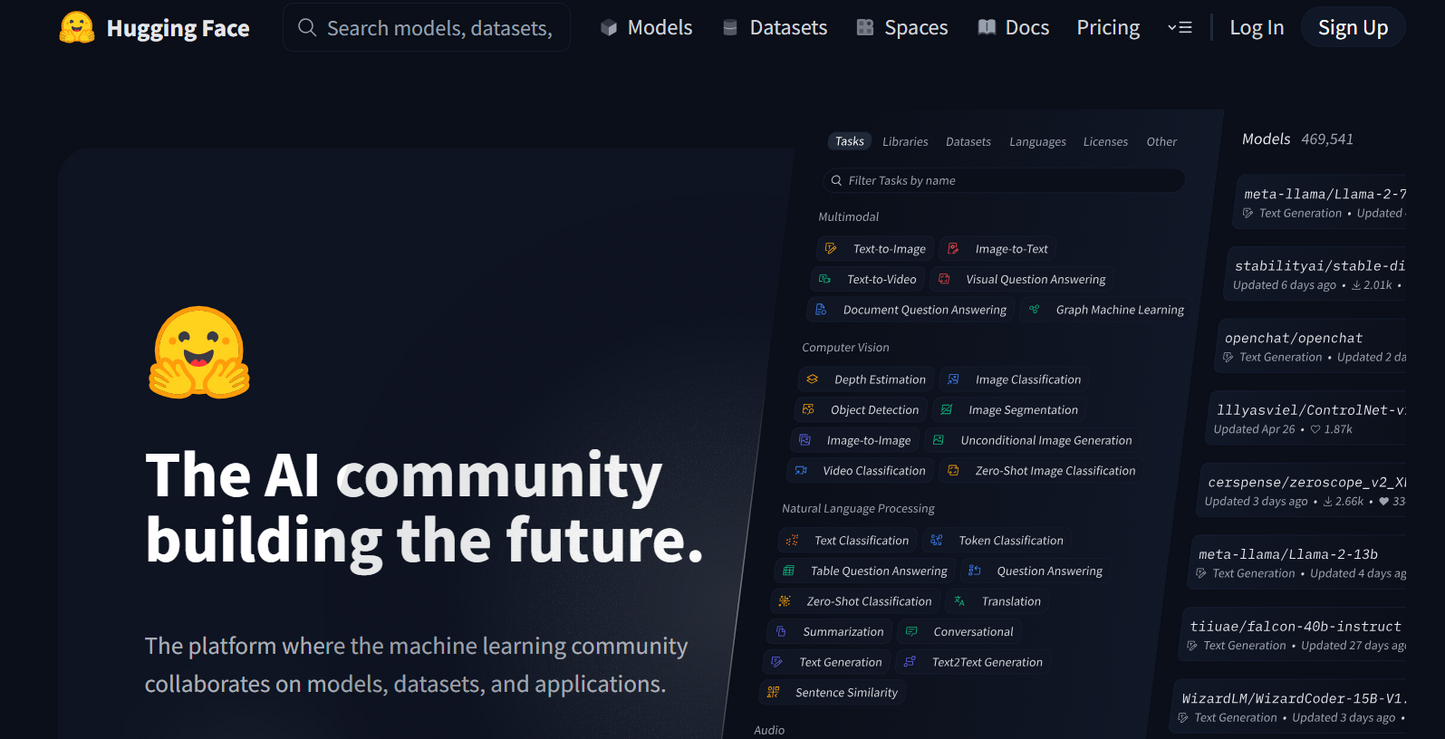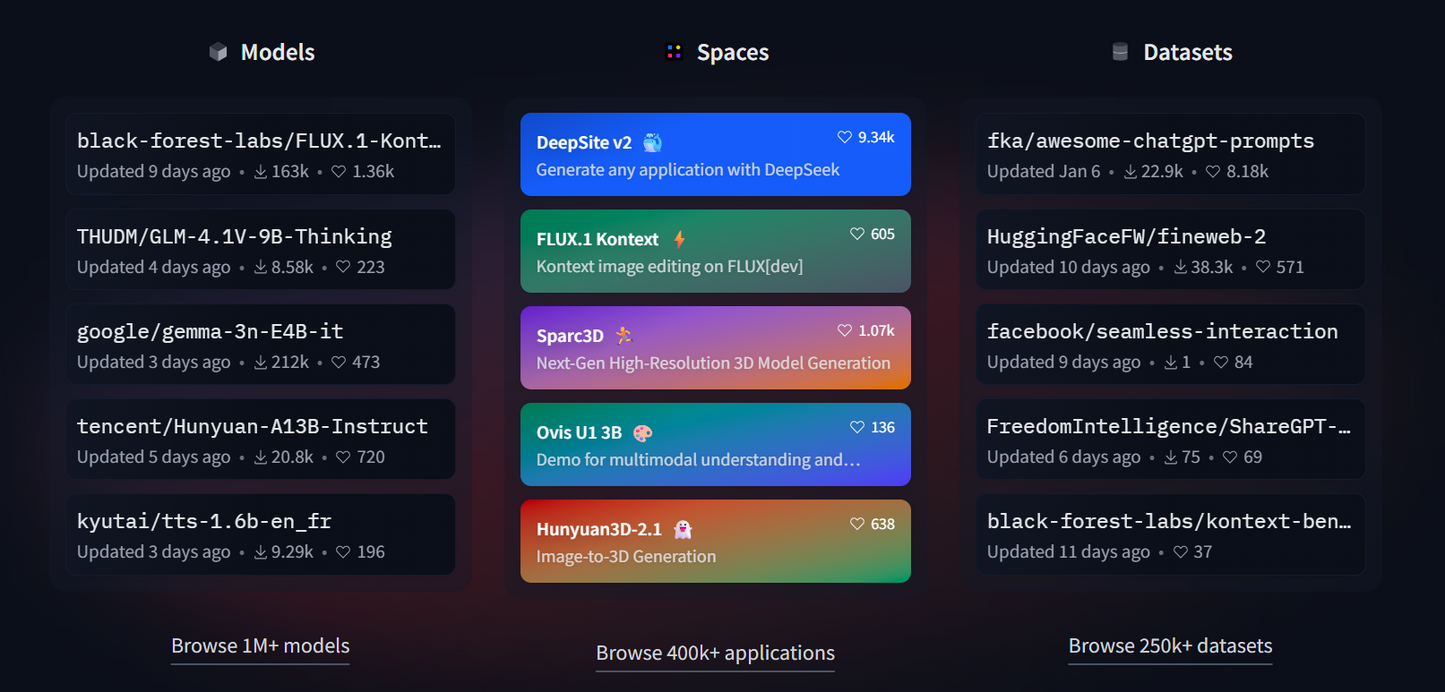Hugging Face: The center of open-source AI 🤖🫂💡
Hugging Face: The center of open-source AI 🤖🫂💡
Couldn't load pickup availability
Hugging Face is the world's leading platform and community for open-source artificial intelligence (AI) and machine learning (ML). 🚀 It has become the de facto hub for developers, researchers, and companies working with cutting-edge AI models, datasets, and applications. Hugging Face provides a comprehensive infrastructure for building, sharing, training, and deploying AI models and has significantly contributed to the democratization of AI by simplifying access to powerful technologies.
Our mission and our vision
Hugging Face's mission is to "make good machine learning accessible to all." We believe that open source is the best way to develop AI responsibly and for the benefit of society.
Our vision is to create a collaborative ecosystem where innovations in AI and ML can be freely shared, developed, and used. We strive to foster collaboration within the AI community and accelerate the development of AI applications.
Core functions and offers
Hugging Face offers a wide range of features and resources:
-
Models Hub: A massive library of pre-trained ML models that can be used for a variety of tasks, including natural language processing (NLP), computer vision, audio processing, and more. Developers can upload, download, version, and use models in their own projects. 🧠
-
Datasets Hub: A central hub for sharing and discovering datasets used for training and evaluating ML models. The hub provides tools for hosting, versioning, and easy access to data. 📊
-
Spaces: A platform for hosting and sharing interactive ML demos and web applications. Users can quickly and easily create AI applications and make them available to the public, often based on Gradio or Streamlit. 🌐
-
Transformers Library: A popular open-source Python library that provides thousands of pre-trained models (e.g., BERT, GPT-3, T5, Llama) for tasks such as text classification, translation, summarization, and text generation. 💻
-
Diffusers Library: An open-source library for diffusion models used for image, audio, and video generation. It provides a simple API for training and inference of diffusion models. 🎨
-
Tokenizers Library: An efficient library for training new tokenizers and using the pre-trained tokenizers.
-
Evaluator: A tool for evaluating and benchmarking models across various metrics to measure performance and robustness. ⭐
-
Licensing and Governance: Focus on making models and datasets available under open-source licenses to promote transparency and responsible use. ⚖️
-
Courses and documentation: Comprehensive resources for learning ML and using the Hugging Face tools. 📚
Advantages and target group
Hugging Face offers significant benefits for a wide range of users:
-
Accelerated development: Enables rapid launch of AI projects through access to pre-trained models and datasets. ⚡
-
Collaboration and Community: Promotes the sharing of knowledge and resources within a large and active AI community. 🫂
-
Democratization of AI: Lowers the barrier to entry for the use of cutting-edge AI technologies. 🔑
-
Transparency and reproducibility: The open-source approach promotes transparency and the reproducibility of research results. ✅
-
Cost savings: Reduces the need for extensive in-house training by using pre-trained models. 💰
Target group: AI developers, data scientists, researchers, ML engineers, startups, universities and companies that want to integrate AI into their products or workflows.
Technology and functionality
Hugging Face's foundation is built on a deep understanding of transformer architectures and diffusion models , which power many of today's most powerful AI applications. The platform leverages a cloud-based infrastructure to enable scaling, hosting, and deployment of models and datasets. Its core consists of robust Python libraries (such as transformers and diffusers) that provide a simple application programming interface (API) for interacting with the models. The community hubs (models, datasets, and spaces) are based on Git-based versioning, ensuring collaborative development and traceability.
Applications and use cases
The Hugging Face platform has a wide range of applications:
-
Natural Language Processing (NLP): Text classification, sentiment analysis, language translation, text generation, question-answering systems. 💬
-
Computer Vision: Image classification, object detection, image generation, image segmentation. 🖼️
-
Audio processing: speech recognition, text-to-speech, audio classification. 🎧
-
Generative AI: Creating images, videos, and music from text prompts. 🎨
-
Research and prototyping: Rapidly testing new models and algorithms. 🔬
-
Industrial applications: Integration of AI models into products and services (e.g., chatbots, intelligent assistants). 🏭




